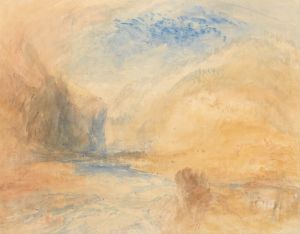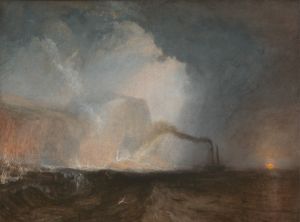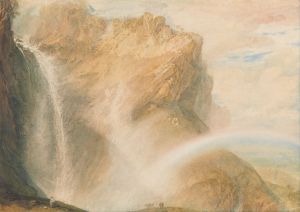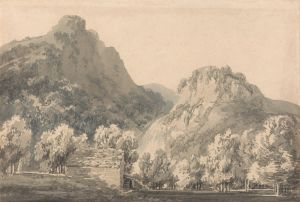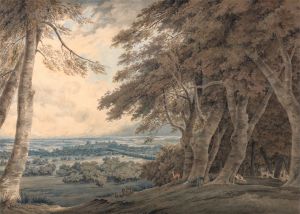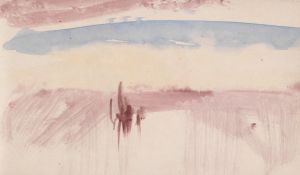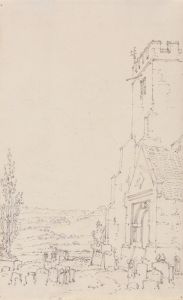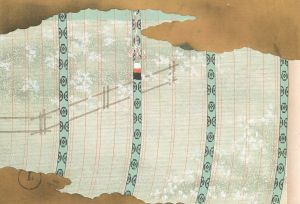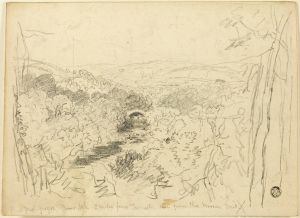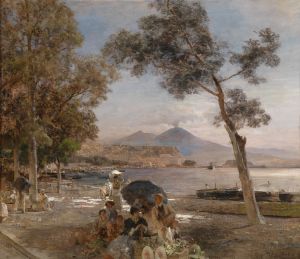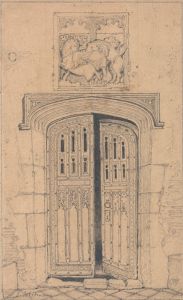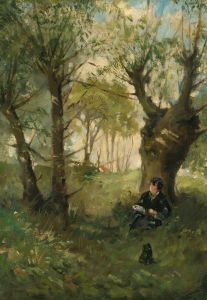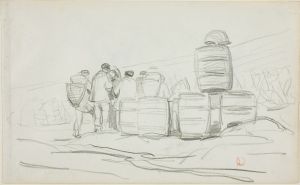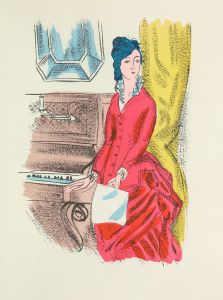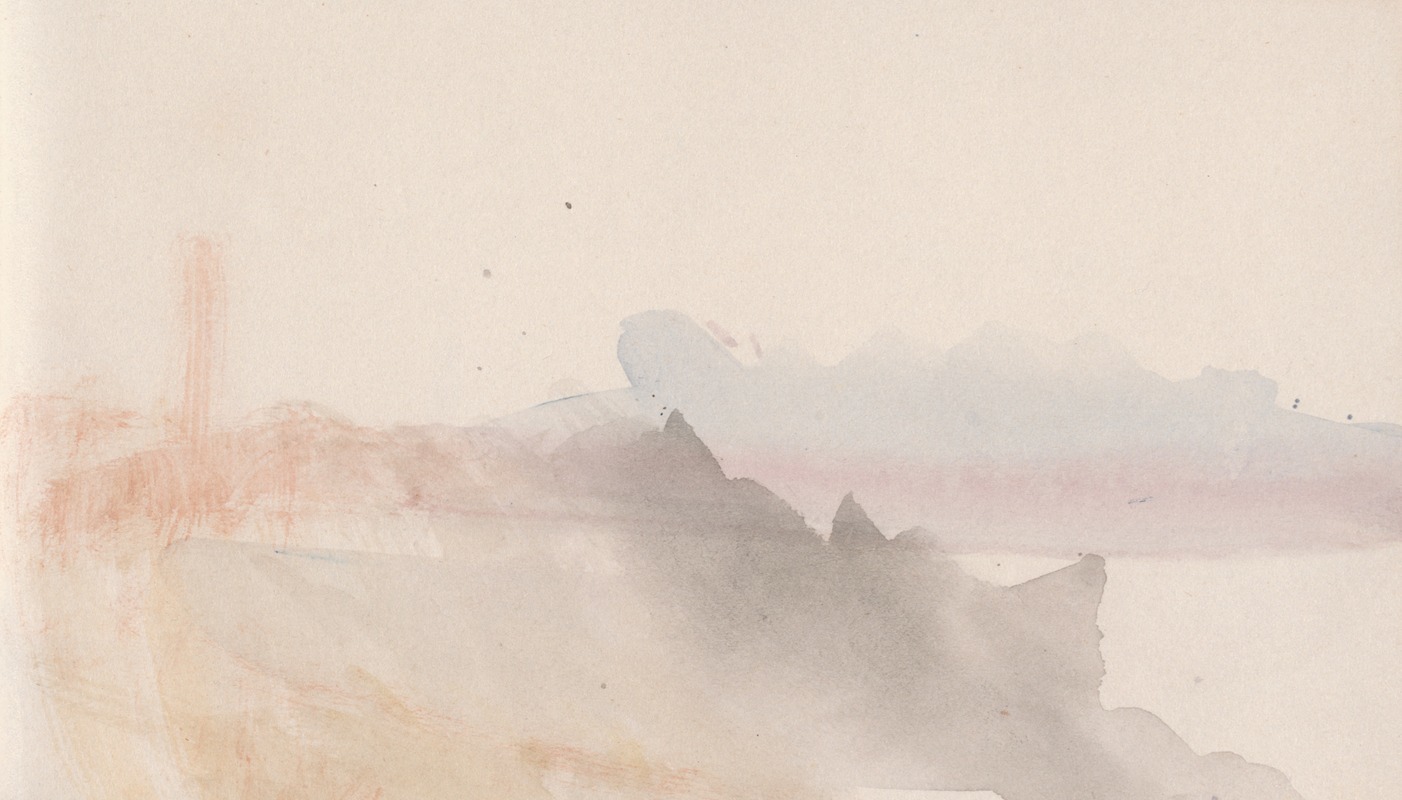
The Channel Sketchbook 36
A hand-painted replica of Joseph Mallord William Turner’s masterpiece The Channel Sketchbook 36, meticulously crafted by professional artists to capture the true essence of the original. Each piece is created with museum-quality canvas and rare mineral pigments, carefully painted by experienced artists with delicate brushstrokes and rich, layered colors to perfectly recreate the texture of the original artwork. Unlike machine-printed reproductions, this hand-painted version brings the painting to life, infused with the artist’s emotions and skill in every stroke. Whether for personal collection or home decoration, it instantly elevates the artistic atmosphere of any space.
Joseph Mallord William Turner, an eminent British artist, is renowned for his evocative landscapes and seascapes, which often capture the sublime power of nature. One of his works, "The Channel Sketchbook 36," is part of a series of sketches that Turner created, which reflect his fascination with the sea and coastal scenes. Turner, who lived from 1775 to 1851, was a pivotal figure in the Romantic movement and is often celebrated for his innovative use of light and color.
"The Channel Sketchbook" is one of many sketchbooks used by Turner throughout his career. These sketchbooks were essential tools for Turner, allowing him to capture fleeting moments and scenes during his travels. The sketches within these books often served as preliminary studies for his larger, more finished works. Turner was known for his extensive travels across Britain and Europe, and his sketchbooks provide a valuable insight into his working process and the development of his ideas.
While specific details about "The Channel Sketchbook 36" are limited, it is known that the sketchbook contains studies related to the English Channel, a body of water that separates Southern England from northern France. This area was a frequent subject for Turner, who was captivated by the interplay of light and atmosphere over the sea. His sketches often depict the dynamic and ever-changing nature of the sea, capturing the movement of waves, the shifting clouds, and the effects of light.
Turner's sketchbooks, including "The Channel Sketchbook," are characterized by their spontaneity and fluidity. He often used pencil and watercolor to quickly capture the essence of a scene. These sketches were not intended as finished artworks but rather as a means of exploring composition, light, and color. Turner's ability to convey the mood and atmosphere of a scene with minimal detail is a testament to his skill as an artist.
The significance of Turner's sketchbooks lies not only in their artistic value but also in their contribution to our understanding of his creative process. They reveal Turner's keen observational skills and his ability to translate the natural world into art. The sketches in "The Channel Sketchbook" likely informed some of his later, more famous works, where he explored similar themes of nature's power and beauty.
Turner's work, including his sketches, had a profound impact on the development of landscape painting. His innovative techniques and his focus on capturing the effects of light and atmosphere influenced subsequent generations of artists, including the Impressionists. Today, Turner's sketchbooks are held in high regard by art historians and are preserved in collections such as the Tate Britain, which houses the Turner Bequest, a vast collection of his works.
In summary, "The Channel Sketchbook 36" by Joseph Mallord William Turner is a part of his extensive body of work that captures the essence of the English Channel. While specific details about this particular sketch are limited, it is representative of Turner's broader artistic endeavors and his mastery in depicting the natural world. Turner's legacy as a pioneering landscape artist continues to be celebrated, and his sketchbooks remain a vital part of his artistic heritage.





